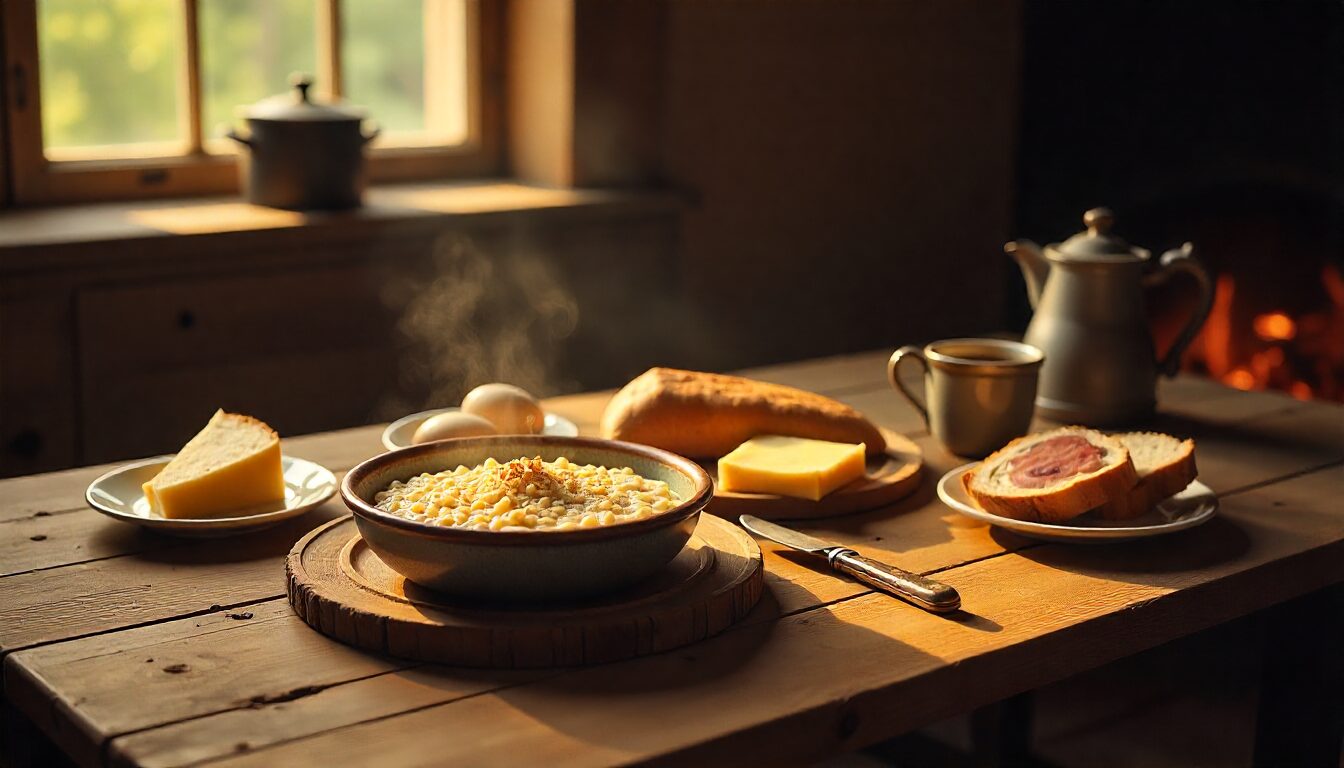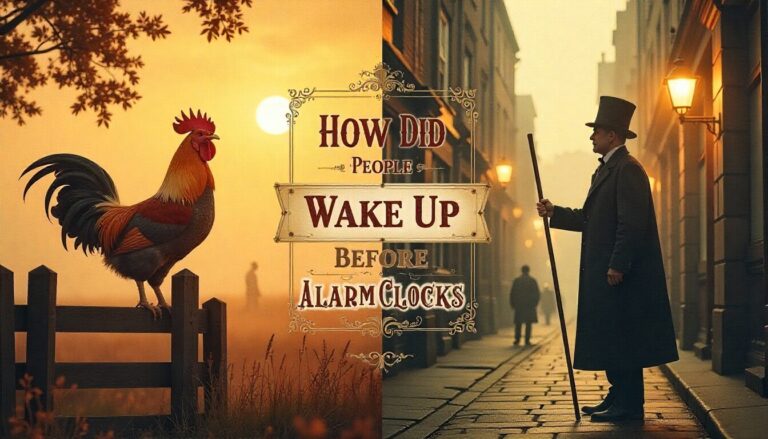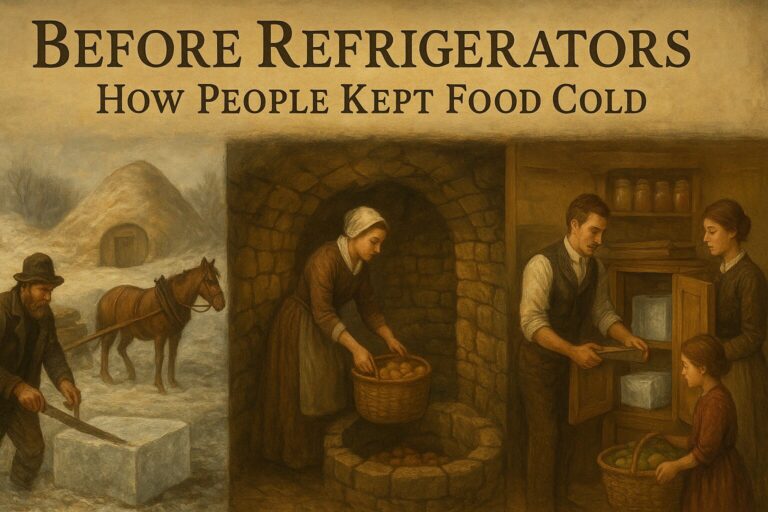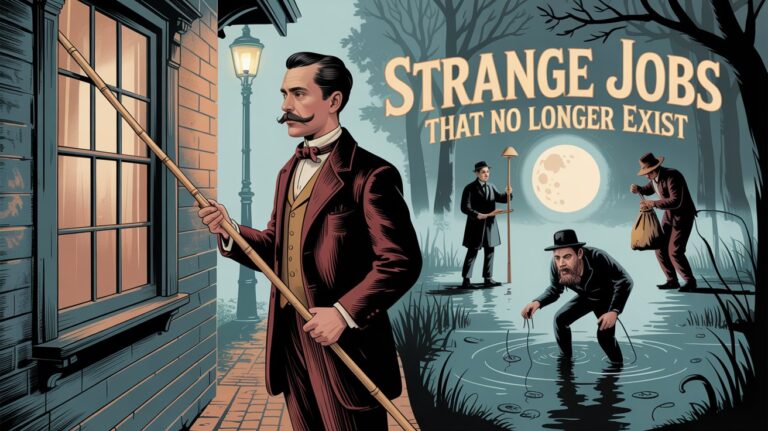If you rolled out of bed in 1825 expecting pancakes dripping with syrup or a quick bowl of cornflakes, you’d be in for a shock. Two hundred years ago, breakfast wasn’t a casual snack—it was a deliberate, hearty meal designed to fuel a long day of physical work. Step back in time to discover what did people eat for breakfast 200 years ago. From porridge and bread to salt pork and seasonal fruit, explore how 19th-century mornings began.
Breakfast in the Early 1800s: A Meal for Survival
In the early 19th century, most people lived in rural communities and worked as farmers, craftsmen, or laborers. Breakfast wasn’t about indulgence—it was about energy and sustenance. The first meal of the day had to carry you through hours of work until the midday meal.
Meals were built around locally sourced ingredients—whatever could be grown, raised, or baked at home. Imported goods like tea, coffee, and sugar were available but still considered luxuries for many.
A Typical 1825 Breakfast Menu
- Porridge or Gruel
Made from oats, barley, cornmeal, or rye.
Cooked slowly in water or milk over a fire.
Sweetened with molasses or honey only when available.
- Fresh Bread or Biscuits
Rye bread or wheat loaves in the north, biscuits in the southern United States.
Served with butter, lard, or dripping (rendered animal fat).
- Meats for the Morning
Salt pork, bacon, or leftover roasted meat from the previous night.
Fried in a pan and eaten with bread.
- Eggs
Fried, boiled, or poached.
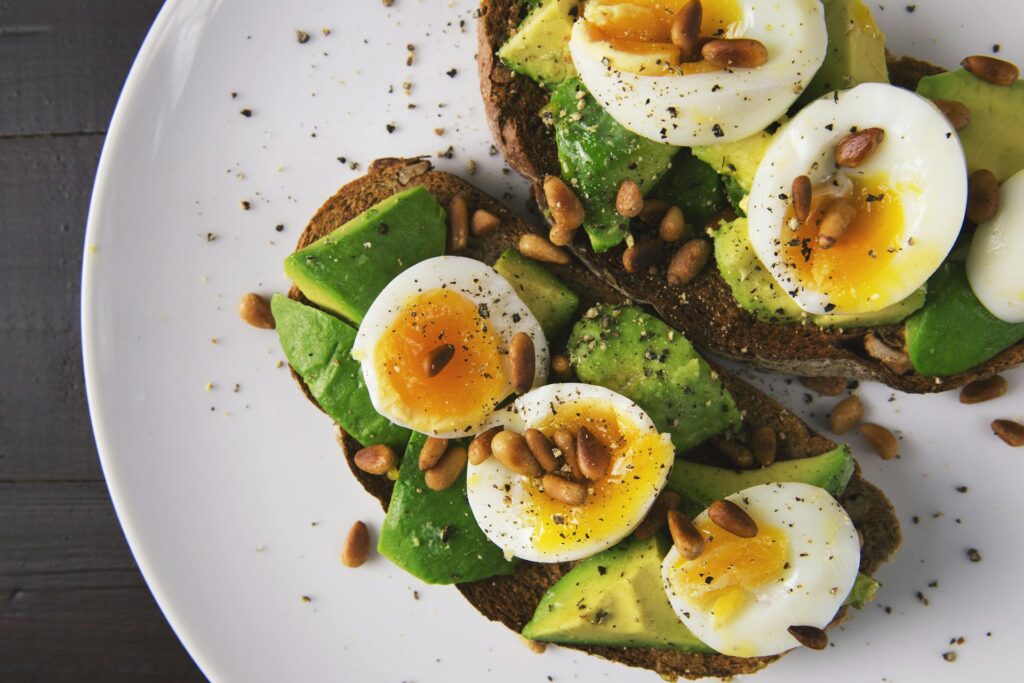
Common in households with hens.
- Cheese and Dairy
Cheese was popular in farming regions.
Often paired with bread or eaten alongside cold meats.
- Tea, Coffee, or Milk
Tea dominated in Britain and its colonies.
Coffee became increasingly popular in America.
Milk was common, especially for children.
- Seasonal Fruits and Preserves
Apples and berries in season. Preserved fruits and jams in winter.
How Wealth Shaped the Breakfast Table
Wealthier Families: Imported teas, coffee, refined sugar, tropical fruits in syrup, fine white bread, and fresh dairy products.
Working-Class Families: Relied heavily on staple grains, salted meats, and homegrown vegetables or dairy.
The upper classes could enjoy long, leisurely breakfasts, while working families often ate quickly before heading to work.
Breakfast Around the World in the 1820s
Breakfast foods varied greatly depending on geography:
England & Scotland
Scotland: Oat porridge was a staple.
England: Bread, cheese, tea for the working class; meats, eggs, and preserves for the wealthy.
United States
New England: Cornmeal mush, brown bread, apple preserves.
South: Biscuits, ham, gravy, and fruit.
Frontier: Jerky, cornbread, wild berries.
France
Bread, cheese, and coffee (for those who could afford it).
China
Congee (rice porridge) with pickles or salted vegetables; tea.
India
Flatbreads (chapati), lentil stews, rice dishes, and vegetables.
Turning Points in Breakfast History
Industrial Revolution (late 18th–19th century) – Urbanization meant quicker, simpler breakfasts.
Global Trade Expansion – Coffee, sugar, and exotic fruits became more accessible.
Health Reform Movement (Late 1800s) – Shift from heavy meat breakfasts to grains and fruit, leading to breakfast cereals.
Marketing Boom (Early 1900s) – Breakfast promoted as “the most important meal of the day.”
Modern Breakfast vs. 1820s Breakfast
Today’s breakfast might be:
A full English fry-up.
A smoothie bowl.
A quick granola bar.
Or no breakfast at all.
But surprisingly, some 1820s staples—like porridge, eggs, and bread—are still popular. We’ve just modernized them.
Why 19th Century Breakfasts Still Fascinate Us
Studying what people ate for breakfast 200 years ago offers more than historical trivia—it shows how our diets reflect our lifestyles, technology, and culture.
Back then, breakfast was about fueling physical labor. Today, it’s often about convenience, health, or personal preference.
Frequently Asked Questions (FAQs)
Did people eat fruit for breakfast in the 1800s?
Yes, but only when it was in season or preserved.
Was coffee common in the early 19th century?
It was growing in popularity, especially in America, but tea remained dominant in Britain.
Did children eat differently from adults?
Not much. Children usually had smaller portions of the same food.
Were sweet breakfasts common?
No. Most breakfasts were savory and filling.
What was the most common 1800s breakfast food?
Porridge and bread were universal staples.

